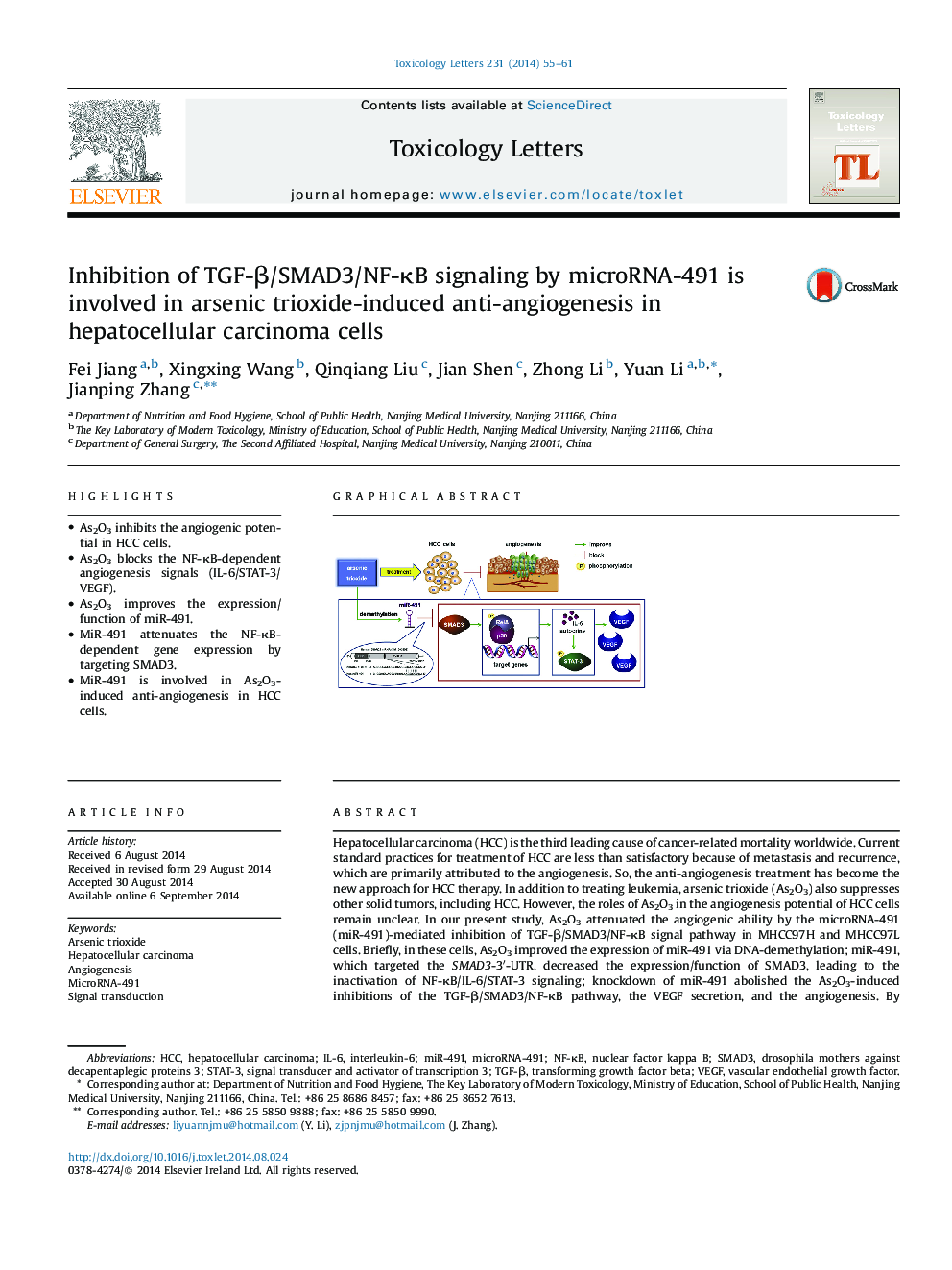| Article ID | Journal | Published Year | Pages | File Type |
|---|---|---|---|---|
| 2598891 | Toxicology Letters | 2014 | 7 Pages |
•As2O3 inhibits the angiogenic potential in HCC cells.•As2O3 blocks the NF-κB-dependent angiogenesis signals (IL-6/STAT-3/VEGF).•As2O3 improves the expression/function of miR-491.•MiR-491 attenuates the NF-κB-dependent gene expression by targeting SMAD3.•MiR-491 is involved in As2O3-induced anti-angiogenesis in HCC cells.
Hepatocellular carcinoma (HCC) is the third leading cause of cancer-related mortality worldwide. Current standard practices for treatment of HCC are less than satisfactory because of metastasis and recurrence, which are primarily attributed to the angiogenesis. So, the anti-angiogenesis treatment has become the new approach for HCC therapy. In addition to treating leukemia, arsenic trioxide (As2O3) also suppresses other solid tumors, including HCC. However, the roles of As2O3 in the angiogenesis potential of HCC cells remain unclear. In our present study, As2O3 attenuated the angiogenic ability by the microRNA-491 (miR-491)-mediated inhibition of TGF-β/SMAD3/NF-κB signal pathway in MHCC97H and MHCC97L cells. Briefly, in these cells, As2O3 improved the expression of miR-491 via DNA-demethylation; miR-491, which targeted the SMAD3-3′-UTR, decreased the expression/function of SMAD3, leading to the inactivation of NF-κB/IL-6/STAT-3 signaling; knockdown of miR-491 abolished the As2O3-induced inhibitions of the TGF-β/SMAD3/NF-κB pathway, the VEGF secretion, and the angiogenesis. By understanding a novel mechanism whereby As2O3 inhibits the angiogenic potential in HCC cells, our study would help in the design of future strategies of developing As2O3 as a potential chemopreventive agent when used alone or in combination with other current anticancer drugs.
Graphical abstractFigure optionsDownload full-size imageDownload as PowerPoint slide
